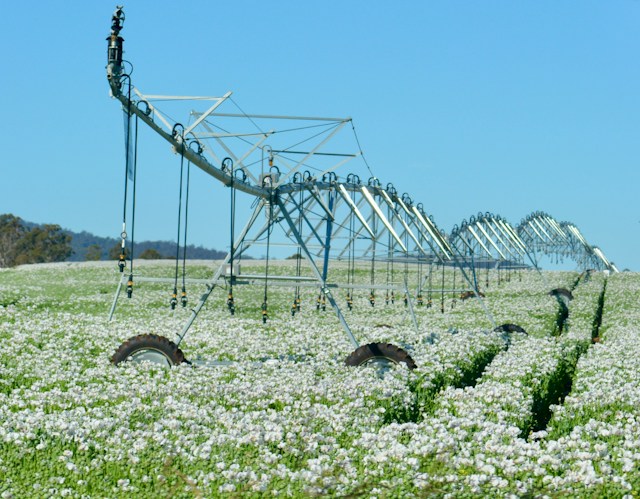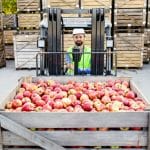Are you aware that the planet’s water resources are rapidly depleting, and agriculture is the largest consumer? Here’s a fun fact: The food that you munch on daily is a product of agriculture, which uses about 70% of freshwater withdrawn in the world. In such a scenario, consider how the marriage of technology and agriculture, especially in terms of smart irrigation systems, can be a game changer.
Understanding the Role of Water in Agriculture
Before we jump into the specifics of smart irrigation, let’s first understand why water is so crucial in agriculture. Simply put, water is the lifeblood of any agricultural activity. From the seed’s germination phase to the fruit-bearing stage, water plays an essential role. It helps in the absorption of nutrients from the soil, supports the plant’s structure, and aids in photosynthesis. However, the amount of water required may vary depending on the crop, weather conditions, and soil type.
A voir aussi : Interior design trends dominating the Philadelphia scene in 2024
Over-irrigation or under-irrigation can be detrimental to crop health, causing either waterlogging or drought stress, respectively. This is where smart irrigation systems come into play, providing the right amount of water at the right time, based on the data they collect.
Enter Smart Irrigation Systems
Smart irrigation systems are not just another piece of trendy tech. They are an integral part of modern farming practices that help farmers manage their water usage more efficiently. These systems employ advanced technology, including IoT devices, sensors, and data analytics, to provide optimal irrigation scheduling based on real-time field conditions.
Avez-vous vu cela : How to build resilience and overcome life’s challenges with confidence?
Unlike traditional irrigation methods that operate on predefined schedules, regardless of the soil moisture content and weather conditions, smart irrigation systems adapt based on the data they collect. This data-driven approach helps to conserve water while maintaining crop health and improving yields.
The Magic of Soil Moisture Sensors
Now, you might be wondering, how do these smart irrigation systems know when to water the crops? The answer lies in the power of soil moisture sensors. These small devices are planted in the ground to constantly monitor the moisture levels in the soil.
When the soil moisture dips below a certain level, the sensors send a signal to the irrigation system triggering it to water the crops. Conversely, if the moisture levels are adequate, watering is postponed, thus saving water. This means you’re only using water when the crops need it, minimizing wastage and promoting water conservation.
Harnessing Weather Data for Precision Irrigation
Weather plays a crucial role in irrigation management. A sudden downpour can change the soil moisture levels and the need for watering. Smart irrigation systems take this into consideration by integrating with weather forecast data.
When the forecast predicts rainfall, the smart irrigation system can postpone or even cancel the scheduled watering, avoiding unnecessary water usage. This weather-based approach ensures efficient use of natural rainfall, further promoting water conservation in agricultural practices.
Revolutionizing Agriculture with IoT based Smart Irrigation
The Internet of Things (IoT) is not just about smart homes and wearables; it’s making waves in agriculture too. By connecting soil sensors, weather data, and irrigation systems, IoT creates a comprehensive network that allows for real-time monitoring and management.
With IoT-based smart irrigation, farmers can control their irrigation systems remotely, using a smartphone or a computer. They receive real-time notifications about the soil and weather conditions, allowing them to make informed decisions about watering their crops. Furthermore, historical data collected by these systems can help farmers understand their water usage patterns and identify areas for further improvement.
In a world where water is becoming an increasingly scarce resource, smart irrigation systems offer an innovative solution. By leveraging data and technology, these systems not only conserve water but also help farmers optimize their crop yields. Indeed, the future of agriculture is smart and sustainable.
How Drip Irrigation Technology Contributes to Water Conservation
In the quest for more efficient water management in agriculture, drip irrigation technology has proven to be a game changer. Often integrated within smart irrigation systems, drip irrigation delivers water directly to the roots of the plants. Instead of spraying water all over the field, this targeted approach reduces water waste and enhances the efficiency of irrigation.
The technology uses a network of pipes, tubes, and valves to deliver a precise amount of water. The water drips slowly into the soil surrounding the roots, providing a steady supply of moisture that helps the plants thrive. This method of irrigation is particularly beneficial in arid and semi-arid regions where water scarcity is a common issue.
Moreover, drip irrigation technology, when paired with soil moisture sensors, can further enhance water conservation. The sensors can provide real-time data about moisture levels in the soil, enabling the system to adjust the watering schedule as per the requirement. This not only prevents over-irrigation but also ensures that the crops get the optimal amount of water they need to grow, resulting in healthy crop yields.
The Impact of Smart Irrigation Systems on Water Resources
The introduction of smart irrigation in agriculture has significantly impacted the way we manage our water resources. According to studies, smart irrigation systems can save up to 50% of water compared to traditional irrigation methods. This has huge implications for water conservation in agriculture, which is the largest consumer of freshwater.
Furthermore, efficient water usage in agriculture can free up water resources for other purposes, such as drinking, cooking, and sanitation, especially in regions where water scarcity is a severe problem. By reducing the water consumption in agriculture, we can ensure a more equitable distribution of this precious resource.
Key Takeaways and the Future of Smart Irrigation
Here are the key takeaways from this article:
- Agriculture is the largest consumer of freshwater, and smart irrigation systems present a solution to reduce water usage.
- By using real-time data from soil moisture sensors and weather forecasts, smart irrigation systems can provide the optimal amount of water at the right time, thus preventing water waste.
- Technologies like drip irrigation and IoT-based irrigation systems enhance the effectiveness of smart irrigation, leading to water conservation and improved crop yields.
Looking forward, the role of smart irrigation in agriculture is expected to grow exponentially. With the increasing pressure on water resources and the need for sustainable farming practices, farmers worldwide will likely adopt these technologies. The future of agriculture, therefore, lies in harnessing the power of data and technology to achieve more with less.
In summary, smart irrigation systems, with their ability to conserve water and improve crop yields, are set to revolutionize the agriculture industry. By embracing these technologies, we can ensure a sustainable future, where agriculture thrives without depleting our precious water resources.











